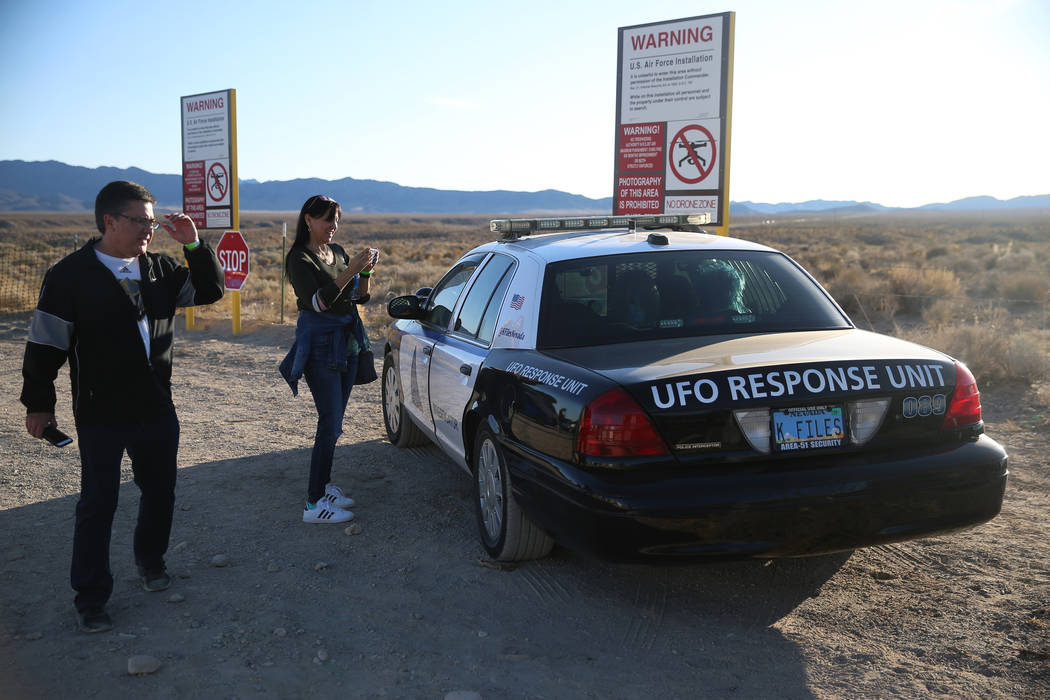Rice Army Airfield is just east of town on the south. Enjoy your visit here; immediately adjacent is a large military complex where you will find additional adventure in recalling activities of the 5th Armored Division.
Camp Ibis, California is 15 miles northeast of Needles. Follow Interstate 40 to California route 95 and go north to the railroad tracks. The post is east of where you cross and look for the area where the railroad tracks bend north. The 4th Armored Division moved out of Camp Ibis in June 1943 and the 7th Armored simultaneously moved in. The 11th Armored Division closed Camp Ibis.
Camp Clipper, California was also known as Camp Essex. The post is approximately 42 miles west of Needles on Interstate 40, northwest of Essex, and adjacent to the Interstate. There were two posts in the area. The temporary camp was occupied by the 33rd Infantry Division and the 93rd moved into the permanent camp when it was ready.
The posts in Area B can easily be toured. We used Gila Bend, Arizona as a starting point. Gila Bend Army Airfield is still active and is used to support the massive gunnery range south of Interstate 8.
Camp Hyder, Arizona is where the 77th and 104th Infantry Divisions trained. Take Interstate 8 west to the Sentinel intersection and go north approximately 15 miles to the T with an improved dirt road. Turn left southwest and watch for the stone gates on your right just across the railroad tracks. Cross over and either take the road directly in front or follow the road going off at 45 degrees to your left. If you follow the road going north where the road makes two sharp turns you are at the eastern edge of the camp. Be sure and visit Aqua Caliente, now a ghost town. The swimming pool there was built by the 77th.
Camp Horn, Arizona can be reached by following the improved farm road southwest and from Hyder keep straight on after passing Horn, watching for the 81st Infantry Division pyramid on your right just across the tracks. The 104th Infantry Division was here briefly prior to going to Palen Pass. Red Mountain Farms, Inc. has reclaimed the land, turning swords into plows and only the southwest portion of Camp Horn remains at this writing.
Return to Horn, Arizona, and proceed south watching for Dateline Army Airfield on your left as you approach the Interstate. Incorrectly named by the War Department, the field was a Yuma Army Airfield Auxiliary in their twin-engine pilot training program. There are numerous building foundations and the Interstate separates the flight line from the barracks area. Dateline pilots fondly recall buzzing the troops which was strictly against the rules. The troops protested by throwing rocks at the low-flying B-25 aircraft. There are no reports of damage to either party.
Yuma Army Airfield, Arizona is now an international airport and a Marine Corps Air Station. The 83rd Flying Training Group was here and the base later became Vincent Air Force Base, an Air Defense Command training base before becoming a Marine Corps Air Station.
Camp Laguna, Arizona is on the site of the present-day Army Proving Ground complex. Old-timers in Yuma still remember when the 6th Armored first came to town. The 3rd and 9th Armored plus the 79th Infantry Division trained at Camp Laguna.
The Special Bridge Test Section (later the Yuma Test Branch) of the Engineer Board tested on the Colorado River all floating equipment used by the engineer troops. Italian Service Units organized from prisoners of war left tangible evidence of their time in the desert, a very ornate stone paint locker shaped like a castle!
Camp Pilot Knob, California (Area A) is west of Yuma. Take Interstate 8 west passing Fort Yuma and exit at the Ogilby railhead where the 85th Infantry Division trained. Also in the immediate area are the remains of the Ogilby townsite and a portion of the old pre-war plank road.
Camp Bouse, Arizona, the home of the top-secret 9th Tank Group, can best be reached from Wenden, Arizona (between Wickenburg and Quartsite on Arizona Route 60), going north on the Alamo State Park highway. After clearing the Havacur Mountain pass, follow the power line road on your left for approximately 10 miles along a very rough road until reaching a gate. Go to your right and you will come to the old reservoir at the southeast edge of the post. Observe the warning signs en route to Camp Bouse.
Other major installations that supported the Desert Training Center were located at Banning, San Bernardino, Claremont, Colton, Sparda, Cherry Valley, 1000 Palms, and Needles, California. Banning, for example, was the Communications Zone Headquarters with a 1000-bed hospital, landing strip, and range complex. We cannot ignore Kingman Army Airfield, Arizona which was a combat crew training base and now is the local airport. The base was used for military aircraft storage and disposal after the war and still serves that function for tired airliners. One of Kingman’s auxiliary fields, Site 6, has blossomed into Lake Havasu City, the present home of the London Bridge. The former military airfield is the city airport. Laguna Airfield is the former Ford Motor Company’s test facility.
It was a sad day for the ponderous proliferators of pompous prose when those Army writers who sleep with a thesaurus under their pillows forgot to forever remember and mourn the departure of the two great mothers of vernacular virtuosity – now gone from the glossary of superfluous supernumeraries. CARC and CDC are now residing in that great unabridged repository in the archives. And the mundane will never know their equal. Mostly, we will never forget that great contribution to vocal vicissitudes, USA CDC Pamphlet No. 310-9, a compilation of acronyms and a source of jewels and gems too rare to be passed without note.
To start with, we find ADOLPH, which the thirsty will be happy to know means, Aerial Delivery of Liquid Provisions by Hose.
We also like BALTRAC, which the Pamphlet states can stand for, Ballistable Tractor, Light and Medium, and sounds like a tractor fired from guns! And, here are a couple of little gems,
CG stands for Center of Gravity, but
CON stands for Commanding General’s Notes.
Just so our women members won’t feel left out, we hasten to mention DACOWITS which CDC said can stand for, Defense Advisory Committee on Women in the Services. As the reader may have noted, the list is almost endless, over 100 pages, but just to narrow the field the writer will extract a few of the most memorable examples: JOVIAL Jules Own Version of the International Algorithmic.
FUBAR stands for Fucked Up Beyond All Repair;
NEATO for Northeast Asia Treaty Organization;
PA for Probability of Arrival;
PUK for Pivotal Unknowables;
ROAR Return of Army Returnables;
SANO for Special Assistant for Night Operations;
SATAN for Simulation for Assessment of Tactical Nuclear Weapons;
SATIRE for Semi-Automatic Technical Information Retrieval System;
SNAFU for Situation Normal All Fucked Up,
SOURCE for Stimulation of Utilization, Resources, Cost, and Efficiency Language.;
TAILS for The Army Information Logistic System.
After ROAR, SANO, and TAILS, perhaps the reader will be willing to skip TIPSY, but no recounting would be complete without that pinnacle of the lexicon’s nightmare RAMMIT. Which in case you couldn’t guess, stands for, Reliability Maintenance Inability Machine Integrated Totals. Is it any wonder that CDC will live forever in the world of lexicography?
And what of CONARC, that prominent proboscis on the promontory? Without doubt, no greater tribute to the reductive reactions of this repository exists, than those refined by the staff officers thereto assigned, to with
The First Indorsement Headquarters;
The Rookery;
The Eagle’s Nest;
The Eagle’s Roost;
The Chicken Roost;
Where the Eagles Go to Die;
The Land of a Thousand Sleeping Eagles;
Where the Elephants Go to Die;
The Land of a Thousand Sleeping Chickens;
The Sea of Tranquility;
Slumberland;
The Old Colonel’s Home;
The Old Soldier’s Home;
The Sleeping Giant;
The Retirement Headquarters;
The End of the Road;
The Do Nothing Headquarters;
The Largest Bird Sanctuary East of the Mississippi River.
With this enduring tribute, we close. Farewell, Godspeed, good-by, and a new Roget’s to you all!























